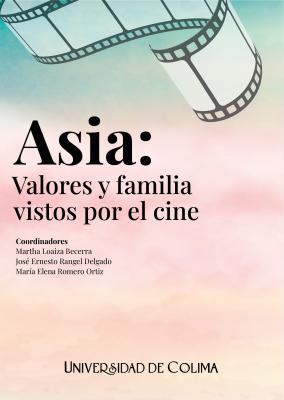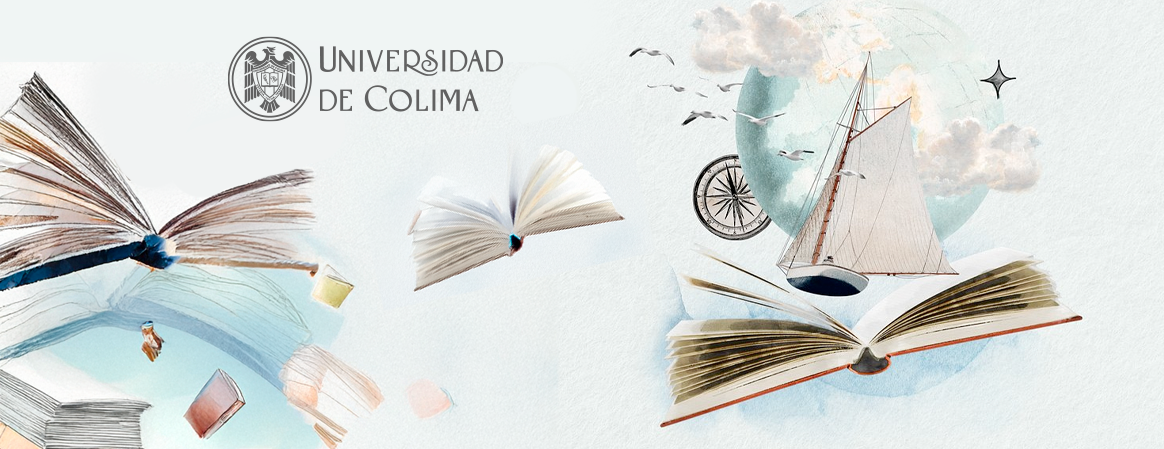Asia: Values and Family Seen Through Film
Keywords:
Asia, Values, Family, Culture, SocietySynopsis
This work is the result of the effort of sharing with the academic and educational communities, and society in general, the history, culture, society, identity, problems, and challenges of Asia, by way of the film industry as a tool that is agile, flexible, and multifaceted which makes it possible to learn in regards to this, by way of the vision of directors of the films that are analyzed here. From the diverse disciplines of academic training of the authors, we may recuperate the cinematic proposals of Japan, China, South Korea, and Russia which make it possible to approach the social contexts from everyday life, their problems and values.
Downloads
References
ABC Internacional. (2002, 16 de marzo). Los norcoreanos refugiados en la embajada española en Pekín viajan a Corea del Sur. ABC Internacional. https://www.abc.es/internacional/abci-norcoreanos-refugiados-embajada-espanola-pekin-viajan-corea-200203150300-84983_noticia.html
Alamy (s.f.a). Imagen de la familia Fukushima. https://www.alamy.es/kimura-yagira-kitaura-shimizu-tu-daremo-shiranai-nadie-sabe-2004-image485282257.html
Alamy.es (s.f.b.). Foto de stock. https://www.alamy.es/son-ladrones-aka-manbiki-kazoku-desde-la-izquierda-sakura-ando-miyu-sasaki-jyo-kairi-lily-franky-mayu-matsuoka-kirin-kiki-2018-gaga-cortesia-coleccion-everett-image209885262.html
Amazon. (s.f.). Página comercial. Consultada: 14 de mayo de 2023. https://www.amazon.co.jp/-/en/dp/B002966H64
Asian Cinema, 13(2), 54-71. https://doi.org/10.1386/ac.13.2.54_1
Aukana (s.f.). Diagrama de la relación de los personajes en De tal padre, tal hijo (そして父になるの人物相). https://doga.hikakujoho.com/library/00004785.html
Australian War Memorial, (40), 26-27.
Balki, R. (2018). Padman [Película]. Dirigida por R. Balki. India: Columbia Pictures, DVD.
Banco Mundial (2023). Datos. https://datos.bancomundial.org/indicador/SG.VAW.1549.ZS?locations=IN
Bandai Visual Co., LTD (s.f.). Kiseki. https://v-storage.bnarts.jp/sp-site/kiseki/
Barr, M. (2000). Lee Kuan Yew and the "Asian Values" Debate. Asian Studies Review, 24(3), 309-334 https://onlinelibrary.wiley.com/doi/epdf/10.1111/1467-8403.00080 https://doi.org/10.1080/10357820008713278
Bauman, Z. (2004). Ética posmoderna. Siglo XXI.
Bauman, Z. (2007). Miedo líquido. La sociedad contemporánea y sus temores. Paidós.
BMFTV (Director). (2022, 3 de agosto). Taïwan : "Après la réunification, on va faire une rééducation", affirme l'ambassadeur de Chine en France. https://www.bfmtv.com/international/asie/chine/taiwan-apresla-reunification-on-va-faire-une-reeducation-affirme-l-ambassadeur-de-chine-en-france_VN-202208030437.html
Bock, A. (1978). Japanese Film Directors. Kodansha International LTD.
Bond, P (2015, 20 de abril). North Korean defector-turned-filmaker on 'The interview':'It's Fully a Threat to the Regime'. Gim Gyu Min recalls life in the communist nation, how he escaped and what he thinks of the Seth Rogen-James Franco film. Hollywood Reporter https://www.hollywoodreporter.com/movies/movie-news/north-korean-defector-turned-filmmaker-789918/.
Buckley, S. (2002). Encyclopedia of Contemporary Japanese Culture. Routledge.
Budaev, A. (2022). Rusia y sus inherentes valores tradicionales. Grupo Multimedio. https://grupormultimedio.com/rusia-y-sus-inherentes-valores-tradicionales-id19545/
Burch, N. (1979). To the Distant Observer. Form and meaning in the Japanese cinema. University of California Press.
Buruma, I. (1985). Behind the mask on sexual demons, sacred mothers, transvestites, gangsters and other Japanese cultural heroes. Meridian Books. https://doi.org/10.1177/027614678500500208
Cai, X. (2019). The Ethics of Witness Dailiness and History in Hou Hsiaohsien's Films. Springer. https://doi.org/10.1007/978-981-13-2170-2
Cesarin, S. (2003). Migrantes, refugiados o emigrados. Las comunidades norcoreanas en China y Japón y su papel como sostén financiero del régimen. Documentos de Trabajo, (13). https://dialnet.unirioja.es/servlet/articulo?codigo=1980457
Chile Aduanas Customs. (2023). Foro de Cooperación Económica Asia Pacífico (APEC). https://www.aduana.cl/foro-de-cooperacion-economica-de-asia-pacifico-apec/aduana/2007-02-28/103547.html
Chintamani, G. (2017). Pink. The inside story. Harper Collins Publishers India.
Cortázar, J. (2014). Casa tomada. En Bestiario. Ministerio de Educación.
Cousins, M. (2019). Historia del Cine. Blume.
Datosmacro.com (2021a). Rusia-Población. https://datosmacro.expansion.com/demografia/poblacion/rusia
Datosmacro.com (2021b). Canadá-población. https://datosmacro.expansion.com/demografia/poblacion/canada
Datosmacro.com (2023). Rusia-Homicidios intencionados. https://datosmacro.expansion.com/demografia/homicidios/rusia
Demoskop weekly (2023). Всероссийская перепись населения 2010 г. Население по национальности, полу и субъектам Российской Федерации, (993 - 99427) http://www.demoscope.ru/weekly/ssp/rus_etn_10.php
Dipublico (2016). Rusia, el último gran estado plurinacional europeo. https://www.dipublico.org/104377/rusia-el-ultimo-gran-estadoplurinacional-europeo/
Escalona Agüero, A. (2009). Corea del Norte. En José Luis León Manríquez (Coord.), Historia mínima de Corea (pp. 191-231). El Colegio de México.
Escorial, M. (2017, 29 de octubre). Compresas sí, cenizas y hojas secas no. El País. https://elpais.com/elpais/2017/09/28/planeta_futuro/1506605518_072402.html
Feffer, J. (2004). Corea del Norte-Corea del Sur. RBA Libros S.A.
Filmaffinity. (s.f.). Página web. Consultada: 14 de mayo de 2023. https://www.filmaffinity.com/mx/film652118.html
FilmAffinity.com (2023). Hou Hsiao-hsien. https://www.filmaffinity.com/es/search.php?stype=director&stext=Hou+Hsiao-hsien
Filmin (s.f.). Póster de Nuestra hermana pequeña. https://www.filmin.es/pelicula/nuestra-hermana-pequena
Galbraith, J. K. (1958). The affluent society. Houghton Mifflin.
Geena Davis Institute on Gender in Media y UNICEF. (2021). Gender Bias and Inclusion in Advertising in India. https://tinyurl.com/mr2r32rz
Gim, G. (2015, abril 20). North Korean defector-turned-filmmaker on 'The Interview': "It's fully a threat to the regime". The Hollywood Reporter. https://www.hollywoodreporter.com/movies/movie-news/north-korean-defector-turned-filmmaker-789918/
Goyal, V. (2016). Scope and Opportunities for Menstrual Health and Hygiene
Grupo Internacional de Trabajo sobre Asuntos Indígenas (IWGIA) (2023). El mundo indígena 2023. https://tinyurl.com/7y8bm7td
Guerrero-Solé, F. (2012). La crisis de valores en la Rusia postsoviética. El papel de la Iglesia Ortodoxa en los medios de comunicación de masas. Separata del número 8 de la Revista Comunicación y Hombre, Revista interdisciplinar de Ciencias de la Comunicación y Humanidades. Universidad Francisco de Vitoria. https://doi.org/10.32466/eufv-cyh.2012.8.144.119-128
Haro Navejas, F. J. (2012). Rectificación de los nombres y antropología de las relaciones internacionales en la República Popular China. En R. Cornejo Bustamante (Ed.), China: Estudios y ensayos en honor de Flora Botton Beja (1a edición) (pp. 249-334). El Colegio de México, Centro de Estudios de Asia y África.
Haro Navejas, F. J. (2021). Los japoneses vinieron a construir la sinidad: La cinetización y Los demonios en mi puerta. En M. Loaiza Becerra, E. Rangel Delgado e I. Pineda Lara (Coords.), Cine bélico en Asia (pp. 51-77). Universidad de Colima.
Hasumi, S. (1998). Yasujirô Ozu. Cahiers du Cinéma (Collection "Auteurs").
Holbrook, M. B. y Hirschman, E. C. (1982). The experiential aspects of consumption: Consumer fantasies, feelings, and fun. Journal of Consumer Research, 9(2), 132-140. https://doi.org/10.1086/208906
Holcombe, Ch. (2016). Una historia de Asia oriental. De los orígenes de la civilización al siglo XXI. Fondo de Cultura Económica.
Hoon, C. Y. (2004). Revising the Asian Values Argument used by Asian Political Leaders and its validity. The Indonesian Quarterly Col. 32
Hou Hsiao-hsien. (2022). Preparing to Live in the Present: An Interview with Hou Hsiao-hsien [Cinéaste]. https://www.jstor.org/stable/41689517
Hou, H. (Director). (1989, 15 de septiembre). La ciudad de la tristeza 悲情城市 beiqing chengshi [Película]. Curzon Artificial Eye.
Hultén, B., Broweus, N. y Dijk, M. (2009). Sensory marketing: A literatura review. En A. Krishna (Ed.), Sensory marketing: Research on the sensuality of products (pp. 3-26). Routledge. https://doi.org/10.1057/9780230237049
Hung, C. Y. (2014). Are women included in history? The debate of micro-history and macro-history in Hou Hsiao-hsien's film, A City of Sadness. Asian Cinema, 25(1), 49-70. https://doi.org/10.1386/ac.25.1.49_1
Hutton, W. (2011). Singapore and the Battle of Singapore. Journal of the
International Press (2023, 26 de junio). Casi la mitad de hogares con un solo padre en Japón es pobre. https://internationalpress.jp/2023/07/06/casi-la-mitad-de-hogares-con-un-solo-padre-en-japon-es-pobre/
Internet Movie Database (IMDb). (s.f.). Inicio. https://www.imdb.com/
Jacoby, A. (2011). Why nobody knows - family and society in modern Japan. Film Criticism, 35(2), 66-83,193. https://www.proquest.com/scholarly-journals/why-nobody-knows-family-society-modern-japan/docview/874488772/se-2
Jha, R. (2014, 28 de octubre). La menstruación: el tabú que excluye a las mujeres en India. BBC News Mundo. https://www.bbc.com/mundo/noticias/2014/10/141028_salud_menstruacion_india_tabu_mujeres_egn
Khanday, M.I., Shah, B.A., Mir, P.A. y Rasool, P. (2015). Empowerment of Women in India- Historical Perspective. European Academic Research, 2(11), 14494-14505. https://euacademic.org/UploadArticle/1370.pdf
Khoo, E. (2018). Ramen Teh [Película]. Japón: Zhao Wei Films.
Kim, T. (Director). (2008). Crossing [Película]. Big House-Vantage Holdings.
Kinema, J. (Ed.) (1976). Nippon eiga kantoku zenshû. Guía completa de directores de cine japonés. Kinema Jumpô-sha.
Koreeda, H. (Director). (2004). Nadie sabe [Película]. Japón: Bandai Visual, Cinequanon, Engine Film.
Koreeda, H. (Director). (2011). Kiseki [Película]. Japón: Bandai Visual, Eisei Gekijo, Shirogumi.
Koreeda, H. (Director). (2013). De tal padre, tal hijo [Película]. Japón: Fuji TV, GAGA, Amuse.
Koreeda, H. (Director). (2015). Nuestra hermana pequeña [Película]. Japón: Toho, Gaga Corporation.
Koreeda, H. (Director). (2016). Tras la tormenta [Película]. Japón: Fuji TV, GAGA, AOI Pro.
Koreeda, H. (Director). (2018). Un asunto de familia [Película]. Japón: GAGA, AOI Pro, Fuji TV.
Kumar Ghosh, A. (2023, 17 de julio). Women's Representation in India's Parliament: Measuring Progress, Analysing Obstacles. ORF Occasional Paper, (382), Observer Research Foundation. https://www.orfonline.org/research/women-s-representation-in-india-s-parliament-measuring-progress-analysing-obstacles
Lim, D. (2016). Chilli crab. Infopedia. National Library Board. https://eresources.nlb.gov.sg/infopedia/articles/SIP_1112_2011-06-17.html
Lin, H. (2016). Accidental State: Chiang Kai-shek, the United States and the Making of Taiwan. Harvard University Press. https://doi.org/10.4159/9780674969643
Liu, T. (2011). Taiwan New Cinema and its Legacy. En H. L. Song y Julian Ward (Eds.), The Chinese Cinema Book (pp. 122-130). British Film Institute. https://doi.org/10.5040/9781838711337.ch-013
https://doi.org/10.1007/978-1-84457-580-0_14
Lo, W. (2011). Traditional Chinese Aesthetics and Contemporary Chinese Films: Applying the Idea of Qi-yun to Understand the Temporal Structure of Selected Films of Hou Hsiao-hsien. En Y. Kinnia Shuk-ting (Ed.), East Asian Cinema and Cultural Heritage. From China, Hong Kong, Taiwan to Japan and South Korea (pp. 81-100). Palgrave Macmillan. https://doi.org/10.1057/9780230339507_4
López Aymes, J. F. (2015). Desertores y refugiados norcoreanos: entre la agonía incesante y la esperanza. Estudios de Asia y África, 50(1), pp. 203 y 216. https://doi.org/10.24201/eaa.v50i1.2199
Lozano Cámara, J. J. (2004). La NEP 1921-129, La revolución rusa. Revista digital de historia y ciencias sociales. http://www.claseshistoria.com/revolucionrusa/nep.htm
Macmillan.
Manthorpe, J. (2009). Forbidden Nation: A History of Taiwan. Palgrave
Mashal, M. y Raj, S. (2019, 18 de mayo). Las candidatas indias aún necesitan la bendición de los hombres. The New York Times. https://www.nytimes.com/es/2019/05/18/espanol/india-mujeres-candidatas.html
Media City (2019, 10 de octubre). Diagrama de la relación de los personajes de la película Tras la tormenta (【映画】海よりもまだ深くの相). https://hmayshop.com/archives/8178
Ministerio de Salud, Trabajo y Bienestar Social de Japón (s.f.). Estadísticas. https://www.mhlw.go.jp/english/index.html
Mukhopadhyay, S. y Chanda, T. (2022). Abused but "Not Insulted": Understanding Intersectionality in Symbolic Violence in India. Indian Journal of Human Development, 16(1), 119-138. https://doi.org/10.1177/09737030221101100
Myers, T.E. (2011). Asian Values Debate. In: Chatterjee, D.K. (eds) Encyclopedia of Global Justice. Springer, Dordrecht. https://doi.org/10.1007/978-1-4020-9160-5_164
Nolletti, A. (2011). Introduction: Kore-eda Hirokazu, Director at a Crossroads. Film Criticism; Ann Arbor, 35(2/3), 2-10. https://www.jstor.org/stable/44019315
Nolletti, A. (2011). Kore-eda's Children: An Analysis of Lessons from a Calf, Nobody Knows, and Still Walking. Film Criticism, Ann Arbor, 35(2/3), 147-165. https://link.gale.com/apps/doc/A250577374/EAIM?u=anon~19bc1086&sid=sitemap&xid=801f32d4
Nornes, A. M. y Yeh, E. Y. (2015). Staging Memories. Hou Hsiao-hsien's A City of Sadness. Maize Books. https://doi.org/10.3998/maize.13469763.0001.001
O'Cass, A. y McEwen, H. (2004). Exploring consumer status and conspicuous consumption. Journal of Consumer Behaviour, 4(1), 25-39. https://doi.org/10.1002/cb.155
Olivera, S. V. (2019). Representatividad política de las mujeres en India. Journal de Ciencias Sociales, (13), 5-25. https://doi.org/10.18682/jcs.vi13.884
Organización de las Naciones Unidas Mujeres (s.f.). La igualdad de género. https://tinyurl.com/f8zstyjc
Ozu, Y. (1953). Tokyo story [Película]. Criterion Collection.
Pathak, S. (2021, 29 de agosto). A controversial solution to menstrual exile: building better menstrual huts. NPR. https://www.npr.org/sections/goatsandsoda/2021/08/29/1030338318/a-controversial-solution-to-menstrual-exile-building-better-menstrual-huts
Patil, R. (2021). The Social Status of Indian Women of Different Periods in the Patriarchal Society. Research Ambition an International Multidisciplinary E-Journal, 5(IV), 23-31. https://doi.org/10.53724/ambition/v5n4.06
Pew Research Center (March 2, 2022). How Indians View Gender Roles in Families and Society. https://www.pewresearch.org/religion/2022/03/02/how-indians-view-gender-roles-in-families-andsociety/
Pike, F. (2011). Empires at War. A short History of Modern Asia since Word War II. I.B. Tauris https://doi.org/10.5040/9780755619610
Pine, B. J. y Gilmore, J. H. (1998). Welcome to the experience economy. Harvard Business Review, 76(4), 97-105. https://hbr.org/1998/07/welcome-to-the-experience-economy
PopulationPyramid.net (s.f.). Pirámide poblacional. https://www.populationpyramid.net/
Presidencia de la Nación.
Products in India. International Research Journal of Social Sciences, 5(7), 2319-3565. https://www.isca.me/IJSS/Archive/v5/i7/3.ISCA-IRJSS-2016-044.php
Rangel Delgado, J. E. (2021). Competitividad y cooperación en el desarrollo de la URSS y la Federación de Rusia. En E. Turner Barragán y J. E. Rangel Delgado (Coords.) Estrategias de desarrollo, políticas públicas y competitividad en México y Asia Pacífico. Ed. Universidad Autónoma Metropolitana Unidad Azcapotzalco México. https://doi.org/10.24275/uama.363.10406
Rusopedia (2010). Datos demográficos. https://rusopedia.rt.com/datos_basicos/poblacion/issue_112.html
Sato, T. (1976). Currents in Japanese Cinema. Kodansha International LTD.
Schilling. M. (2016, 11 de mayo). "After the Storm": Koreeda's tempestuous family affairs. The Japan Times. https://www.japantimes.co.jp/culture/2016/05/11/films/film-reviews/storm-koreedas-tempestuous-family-affairs/
Schmitt, B. H. (1999). Experiential marketing. Journal of Marketing Management,15(1-3), 53-67. https://doi.org/10.1362/026725799784870496
Schmitt, B. H. (2006). Customer experience management: A revolutionary approach to connecting with your customers. John Wiley & Sons.
Scott, J. (2018). El género: una categoría útil para el análisis histórico. En M. Lamas (Comp.), El género. La construcción cultural de la diferencia sexual (pp. 269-308). UNAM/Bonilla Artigas Editores.
Sen, S. y Anubhav, S. (2014). Gulaab gang [Película]. Dirigido por Soumik Sen. India: Sahara Movie Studios, DVD. https://doi.org/10.5749/minnesota/9780816691470.003.0010
Shah, R. (2016). Pink [Película]. Dirigida por Roy Chowdhury, A. India: Rising Sun Films, DVD.
Smith, A. (2004). Teoría de los sentimientos morales. Fondo de Cultura Económica.
Smith, C. A. (2008). Taiwan's 228 Incident and the Politics of Placing Blame. Past Imperfect, 14, 143-163. https://doi.org/10.21971/P7XK5F
Smith, R. (2008). Singapore's belated reckoning with its wartime past. Critical Asian Studies, 40(1), 11-32.
Stam, R.; Burgoyne, R. y Flitterman-Lewis, S. (1999. Nuevos conceptos de la teoría del cine: Estructuralismo, semiótica, narratología, psicoanálisis, intertextualidad. Ediciones Paidós Ibérica.
State Council. (2022, 10 de agosto). Full Text: The Taiwan Question and China's Reunification in the New Era-Xinhua [Gubernamental]. Xinhua. https://english.news.cn/20220810/df9d3b8702154b34bbf-1d451b99bf64a/c.html
Suri, M., Sud, V. y Mogul, R. (2021, 13 de septiembre). La violación mortal de una mujer en la India ha 'sacudido a la nación una vez más'. CNN News. https://cnnespanol.cnn.com/2021/09/13/india-violacion-mortal-mujer-trax/
Tan, E. K. H. (2014). Chewing over change: The evolving role of food in postcolonial Singapore. Food, Culture & Society, 17(4), 533-552. https://doi.org/10.2752/175174414X14006746101394
Tannvi, T. y Narayana, S. (2022). The challenge of gender stereotyping in Indian courts. Cogent Social Sciences, 8(1). https://doi.org/10.1080/23311886.2022.2116815
Tapia, C. (2021). Participación política de las mujeres en India. Una mirada a la democracia desde el cine. En O. Ávila y O. Solís (Coords.), Historia y Cine. Un acercamiento a sociedades contemporáneas de diversos continentes (pp. 204-229). Universidad Autónoma de Querétaro.
The Korean Film Council. (n.d.). Kim Tae-kyun. Film & People. Consultado: 28 de agosto de 2022. https://www.koreanfilm.or.kr/eng/films/index/peopleView.jsp?peopleCd=10006085
Thomson Reuters Foundation (2017, 10 de agosto). ¿Qué es el "chaupadi" que Nepal acaba de convertir en delito? El País. https://elpais.com/elpais/2017/08/10/planeta_futuro/1502376632_502801.html
Ti, W. (2008). How did Hou Hsiao‐hsien change Taiwan cinema? A critical reassessment. Inter-Asia Cultural Studies, 9(2), 271-279. https://doi.org/10.1080/14649370801965638
Tones, J. (2018). Sin amor un retrato crudo, valiente y devastador acerca del vacío interior de la Rusia actual. Espinof.com https://www.es-pinof.com/criticas/sin-amor-un-retrato-frio-valiente-y-pesimistaacerca-del-vacio-interior-de-la-rusia-actual
Tony. (2016, April 2). Hainanese Chicken Rice. Guiadesingapur.com. https://www.guiadesingapur.com/hainanese-chicken-rice/
Tsang, S. (2013). Singapore. A Biography. Editions Didier Millet.
Tuan, Y. (2016). Sensoriality and Culinary Aesthetics: The Experience of Eating the Singaporean Chilli Crab. Food, Culture & Society, 19(2), 301-318. https://doi.org/10.1080/15528014.2016.1121602
Udden, J. (2002). Hou Hsiao-hsien and the Question of a Chinese Style. https://doi.org/10.1386/ac.13.2.54_1
Udden, J. (2013). Taiwanese Popular Cinema and the Strange Apprenticeship of Hou Hsiao-hsien. Modern Chinese Literature and Culture, 15(1), 120-145. https://www.jstor.org/stable/41490896
Udden, J. (2017). No Man is an Island. The cinema of Hou Hsiao-hsien (2a edición). Hong Kong University Press. https://doi.org/10.1515/9789888390366
Van Eijk A.M., Sivakami M., Thakkar M.B., Bauman, A., Laserson, K., Coates, S. y Phillips-Howard, P. (2016). Menstrual hygiene management among adolescent girls in India: a systematic review and metaanalysis. BMJ Open, 6, e010290. https://doi.org/10.1136/bmjopen-2015-010290
VisitSingapore.com (2023). Fish Head Curry. https://www.visitsingapore.com/en_my/see-do-singapore/food-drinks/local-dishes/fishhead-curry.html
Wen, T. (2008, junio 17). Hou Hsiao‐hsien: A standard for evaluating Taiwan's cinema (S. H. Gan, Trad.). Inter-Asia Cultural Studies, 9(2), 211-238. https://doi.org/10.1080/14649370801965596
Wolferen, K. (1989). The enigma of Japanese Power. People and politics in a stateless nation. Macmillan.
World Economic Forum (WEF). (2022). Global Gender Gap Report. https://www.weforum.org/reports/global-gender-gap-report-2022/
Yap, B. (2011). Battle for Singapore: The true story of the greatest catastrophe of World War II. Marshall Cavendish International Asia Pte Ltd.
Yip, J. (1997). Constructing a Nation. Taiwanese History and the Films of Hou Hsiao-hsien. En S. H. Lu (Ed.), Transnational Chinese Cinemas. Identity, Nationhood, Gender (pp. 139-168). University of Hawai'i Press. https://doi.org/10.1515/9780824865290-008

Downloads
Published
Series
Categories
License

This work is licensed under a Creative Commons Attribution-NonCommercial-ShareAlike 4.0 International License.







